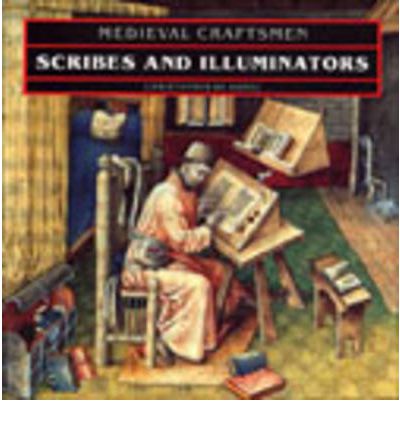
Scribes and Illuminators; Christoper de Hamel
This is part of a series on medieval craftsmen from the University of Toronto Press. (Must find some of these other titles, glass painters, armorers, goldsmiths etc)
The name gives it away, this is about paper and parchment makers, ink-makers and scribes and illuminators, binders and booksellers.
There’s a lot of references to period sources, including quotes from written sources and lots and lots of manuscript images. It’s not a how to, except in making the tools. There’s a fair amount of detail on how to stretch a hide and then scrape it to make the parchment and some photos of a modern reconstruction. There’s actually a lot of images in this book – photos of artefacts and modern reconstructions, and lots and lots of manuscript images. (including an adorable half finished 15th century sketch of French birds.)
Cennino says
Get it from someone who is a good goldbeater; and examine the gold; and if you find it rippling and matt, like goat parchment, then consider it good.
The tone is good and flows well without being too dry.The book is less than 70 pages so it can’t go into great depth about the subject matter, but it does present a good (and well researched) broad brush on the subject matter.
I would recommend this book for anyone getting started in making parchment, ink or looking at getting into illumination. It’s a good history of, and has some information about how to do it, but it is definitely not a “how to”.
[tabs] [tab title=”Publishers Blurb”] Illuminated manuscripts survive in great numbers from the Middle Ages. They are often beautifully preserved, enabling us to appreciate the skilled design and craftsmanship of the people who created them. Christopher de Hamel describes each stage of production from the preparation of the vellum, pens, paints and inks to the writing of the scripts and the final decoration and illumination of the book. He then examines the role of the stationer or bookshop in co-ordinating book production and describes the supply of exemplars and the accuracy of texts. He follows the careers of a number of specific scribes and illuminators who emerge not as anonymous monks but as identifiable professional lay artisans. He also looks at those who bought the completed books, why they did so, and how much they paid.His survey ranges from the eleventh century through the golden age of the thirteenth and fourteenth centuries to the luxurious manuscripts existing at the invention of printing. [/tab] [/tabs]
